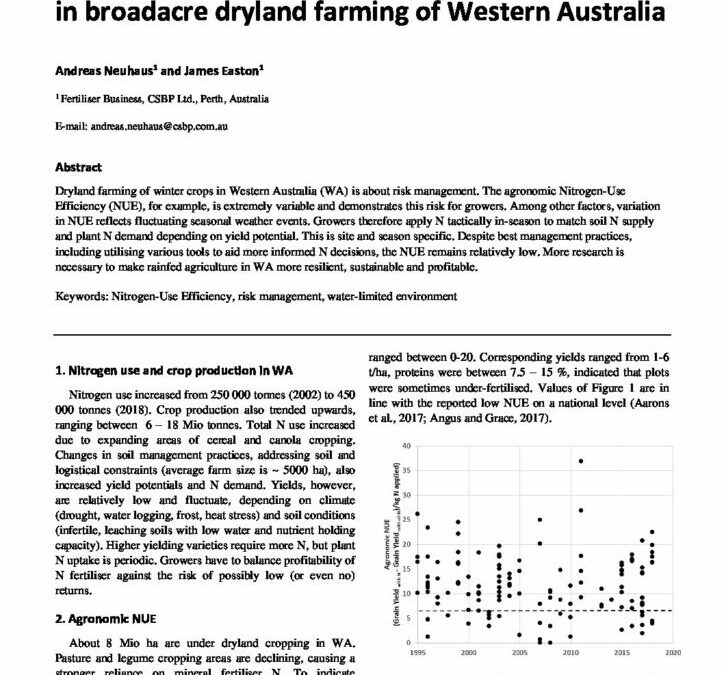The challenge to improve nitrogen-use efficiency in broadacre dryland farming of Western Australia

Dryland farming of winter crops in Western Australia (WA) is about risk management. The agronomic Nitrogen-Use Efficiency (NUE), for example, is extremely variable and demonstrates this risk for growers. Among other factors, variation in NUE reflects fluctuating seasonal weather events. Growers therefore apply N tactically in-season to match soil N supply and plant N demand depending on yield potential. This is site and season specific. Despite best management practices, including utilising various tools to aid more informed N decisions, the NUE remains relatively low. More research is necessary to make rainfed agriculture in WA more resilient, sustainable and profitable.
Nitrogen use increased from 250 000 tonnes (2002) to 450 000 tonnes (2018). Crop production also trended upwards, ranging between 6 – 18 Mio tonnes. Total N use increased due to expanding areas of cereal and canola cropping. Changes in soil management practices, addressing soil and logistical constraints (average farm size is ~ 5000 ha), also increased yield potentials and N demand. Yields, however, are relatively low and fluctuate, depending on climate (drought, water logging, frost, heat stress) and soil conditions (infertile, leaching soils with low water and nutrient holding capacity). Higher yielding varieties require more N, but plant N uptake is periodic. Growers have to balance profitability of N fertiliser against the risk of possibly low (or even no) returns.
